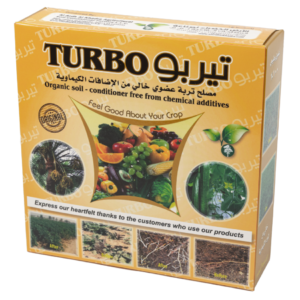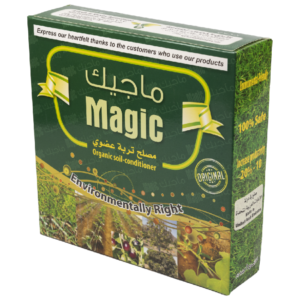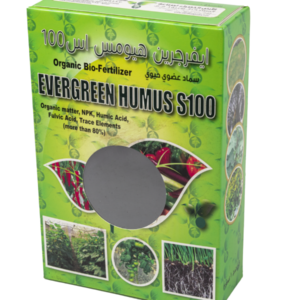The Rise of Drone Farming: How Unmanned Aerial Systems Are Re-shaping Modern Agriculture
Table of Contents
- Why Drones Matter in 21st-Century Agriculture
- A Market Poised to Quadruple: The Data Behind the Buzz
- Drone Technology 101: Sensors, Software, and Autonomous Flight
- Nine High-Impact Agricultural Use-Cases
- 1 Crop Surveillance & NDVI Imaging
- 2 Precision Field & Soil Monitoring
- 3 Automated Planting & Seeding
- 4 Targeted Agro-Chemical Spraying
- 5 Farm-Wide Security & Asset Tracking
- 6 AI-Driven Diagnostics & Decision Support
- 7 Livestock Monitoring & Pasture Management
- 8 Insurance, Compliance, and Disaster Assessment
- 9 R&D: Breeding Trials and Phenotyping
- From Take-off to Insights: A Typical Drone Data Workflow
- Twelve Key Advantages of Drone Farming
- Barriers to Adoption: Cost, Regulation, and Data Overload
- The Future: Swarm Robotics, Edge AI, and Beyond
- Case Study: 4,000-Acre Corn–Soy Rotation Cuts Input Costs 18 %
- Getting Started: Five Practical Steps for Growers
- Frequently Asked Questions
- Conclusion: Drones as a Cornerstone of Climate-Smart Agriculture
Why Drones Matter in 21st-Century Agriculture
Global agriculture faces a perfect storm of challenges: feeding 9.7 billion people by 2050, shrinking arable land, escalating climate volatility, labour shortages, and pressure to slash greenhouse-gas emissions. Traditional agronomy tools—tractor-mounted sensors, satellite imagery, manual scouting—are valuable but often constrained by cost, timeliness, or resolution. Unmanned Aerial Systems (UAS), better known as drones, bridge those gaps.
Flying 30–120 metres above the canopy, a single drone can image hundreds of hectares in minutes, analyse plant health pixel by pixel, and return actionable prescriptions before lunch. Add autonomous flight planning, machine-learning analytics, and variable-rate payload delivery and you have a precision-ag powerhouse that fits in the back of a pickup.
A Market Poised to Quadruple: The Data Behind the Buzz
Analysts at BIS Research forecast the agricultural drone market will jump from roughly US $1.3 billion in 2022 to over US $5 billion by 2028, a compounded annual growth rate exceeding 25 %. Factors fueling this expansion include:
- Rapid cost declines in airframes, batteries, and multi-spectral sensors
- Improved national regulations (e.g., FAA Part 107 in the U.S., EASA rules in the EU) that clarify commercial operations and beyond-visual-line-of-sight (BVLOS) pathways
- Proliferation of easy-to-use cloud agronomic platforms that convert imagery into yield-boosting insights
- Surging investments from venture capital and ag-tech giants, e.g., Deere’s acquisition of Bear Flag Robotics and CNH Industrial’s drone-sprayer partnerships
Drone Technology 101: Sensors, Software, and Autonomous Flight
A modern ag drone system comprises three integrated layers:
- Airframe & Propulsion. Multirotors (quad, hexa, octo) offer hover precision ideal for spot-spraying, whereas fixed-wings deliver long-range coverage for mapping. Hybrid VTOL frames blend both.
- Payload & Sensors.
- RGB cameras (1–2 cm/pixel ground sampling distance)
- Multispectral arrays capturing red, green, blue, near-infrared, red-edge bands for vegetation indices like NDVI, NDRE, GNDVI
- Thermal sensors revealing canopy temperature (stress) and irrigation leaks
- LIDAR for centimetre-grade terrain models
- Tanks, pumps, centrifugal nozzles for liquid or granule application (sprayers, seeders, bio-agents)
- Flight-planning & Analytics Software. Apps such as DJI Terra, DroneDeploy, Pix4Dfields, and Agras MG make it drag-and-drop simple: set field boundary → pick altitude & overlap → autonomous mission → instant ortho-mosaics, zone maps, and variable-rate shapefiles for machines or irrigation systems.
Nine High-Impact Agricultural Use-Cases
1 Crop Surveillance & NDVI Imaging
RGB images pinpoint lodging, waterlogging, wind or hail damage. Overlaid NDVI maps reveal chlorophyll density and photosynthetic efficiency—an early warning for nutrient stress, pest incursion, or irrigation issues days before symptoms show at eye level.
2 Precision Field & Soil Monitoring
Multispectral imaging combined with digital surface models (DSM) provides micro-topography and erosion zones. Growers merge this data with soil samples to refine variable-rate fertiliser scripts, saving 10–20 % N-inputs season after season.
3 Automated Planting & Seeding

Specialised drone seeders fitted with pressurised pods or pneumatic guns can shoot pregerminated seeds plus nutrients into prepared seedbeds or post-fire reforestation zones. Trials show 10× faster planting rates at a fraction of labour cost—particularly valuable for cover-crop establishment and remote hillside plots.
4 Targeted Agro-Chemical Spraying

Multirotor sprayer drones carry 10–40 litres and apply fertiliser, fungicide, or biologicals with centimetre accuracy. Benefits:
- Up to 60 % pesticide savings via prescription spot-spray vs blanket boom passes
- Zero crop trampling & soil compaction
- Safe access to waterlogged, terraced, or steep orchards where tractors can’t operate
5 Farm-Wide Security & Asset Tracking
Thermal night flights deter poachers and equipment theft, locate stray cattle, and monitor perimeter fencing in minutes rather than hours on foot or quad-bike.
6 AI-Driven Diagnostics & Decision Support
Machine-learning models trained on millions of labelled plant images now diagnose leaf-level diseases (e.g., maize leaf blight, powdery mildew) or weed species with >95 % accuracy. Results sync to phones, creating instant spray or rogueing guidance.
7 Livestock Monitoring & Pasture Management
Drones equipped with zoom optics and thermal cameras perform head counts, measure body condition, and inspect remote waterers. Pair with pasture NDVI to time rotations for optimal forage regrowth and methane-reducing grazing plans.
8 Insurance, Compliance, and Disaster Assessment
Post-storm flights create timestamped orthomosaics for crop-insurance claims, while regulation agencies verify conservation-tillage or buffer-strip compliance quickly and objectively.
9 R&D: Breeding Trials and Phenotyping
Plant-breeding companies scan thousands of micro-plots to quantify canopy height, flowering time, and stress tolerance traits—slashing phenotyping costs and accelerating new-variety release.
From Take-off to Insights: A Typical Drone Data Workflow
- Pre-Flight Planning. Import field shape file, set overlap (70 %+), altitude (120 m legal ceiling in many regions), speed, and battery swap points.
- Autonomous Flight & Data Capture. RTK-GPS ensures <2 cm positional accuracy; terrain-following maintains constant altitude above canopy.
- Image Stitching & Calibration. Software aligns hundreds of overlapping images into a seamless orthomosaic; radiometric calibration targets adjust light variability.
- Vegetation Index Calculation. Algorithms translate reflectance values into NDVI, NDRE, canopy temperature, or chlorophyll maps.
- Prescription Map Creation. Zone weeds vs healthy crop, assign variable-rate fertiliser or seeding rates, export shapefile to tractor display or sprayer drone.
- Follow-up & Verification. Ground-truth problem spots, adjust management actions, and refly to measure impact.
Twelve Key Advantages of Drone Farming
- Decision Velocity. Same-day data turns weeks-long scouting into real-time prescriptions.
- Input Optimisation. 10–30 % savings on nitrogen, pesticides, and water by targeting only zones in need.
- Yield Protection. Early detection of stress can recover 5–20 bushels/acre in corn, soy, or wheat.
- Labour Efficiency. One pilot can survey 1,000 acres/day versus multiple agronomists on foot.
- Worker Safety. No exposure to chemicals, heat stroke, or rough terrain during manual spraying.
- Reduced Carbon Footprint. Fewer tractor passes cut diesel use and compaction-related emissions.
- Water Conservation. Thermal maps isolate irrigation leaks; spot watering can save millions of litres annually.
- Soil Health. Eliminating heavy equipment passes preserves microbial life and infiltration.
- Regulatory Compliance. Timestamped imagery proves nutrient-management or conservation-tillage adherence.
- Insurance Leverage. Precise loss evidence speeds payouts and lowers premium risk profiles.
- Resilience to Labour Shortage. Autonomy fills the gap as rural workforces age and shrink.
- Scalability. Swarm fleets managed from a single dashboard can scale from 50 to 50,000 acres without linear labour costs.
Barriers to Adoption: Cost, Regulation, and Data Overload
Up-front Investment
Professional multispectral kits cost US $7,000–25,000; sprayer drones run US $15,000–30,000. Leasing or service-as-a-subscription models are easing CapEx hurdles.
Regulatory Hurdles
BVLOS operations, night flights, or chemical application require additional waivers in many jurisdictions. Certification and pilot training remain bottlenecks, though rule-making is steadily progressing.
Data Management Fatigue
Terabytes of imagery can swamp growers already short on time. Successful programs pair drone flights with agronomic advisors or user-friendly dashboards that translate pixels into clear economic ROI.
The Future: Swarm Robotics, Edge AI, and Beyond
- Swarm Drone Fleets that coordinate like honeybees, splitting fields autonomously, charging on solar docking stations.
- Edge AI Processors on the drone itself delivering in-flight disease alerts, no cloud upload needed.
- On-board Phenotyping Labs using hyperspectral, fluorescence, and micro-LiDAR to predict yield down to individual plants.
- Integration with Ground Robots: drones scout, ground rovers execute weeding or micro-dosing, creating a closed-loop system.
Case Study: 4,000-Acre Corn–Soy Rotation Cuts Input Costs 18 %
Location: Champaign County, Illinois, USA
Operator: Third-generation family farm
Objective: Reduce fertiliser and fungicide costs without sacrificing yield.
Implementation:
- Purchased two fixed-wing mapping drones (RGB + multispectral) and one 30 L spraying drone under a three-year lease-to-own (US $1,800/month).
- Weekly flights captured NDVI and thermal imagery; zones below 0.7 NDVI flagged for scouting.
- Variable-rate N top-dress maps exported to John Deere 2630 console; mid-season fungicide applied by drone only to disease hotspots (32 % acreage).
Results (Year 1):
- Fertiliser usage down 14 % (US $52,000 savings)
- Fungicide volume down 46 % (US $37,000 savings)
- Corn yield unchanged at 238 bu/acre; soybean yield +2.1 bu/acre due to timely stress mitigation
- Net ROI after lease and training costs: +US $61,000
Getting Started: Five Practical Steps for Growers
- Define a Pain Point. Nutrient inefficiency? Pest scouting? Choose one goal for year 1.
- Pick the Right Platform. Mapping only → fixed-wing; spraying too → hybrid or multirotor with sufficient payload.
- Start Small. Fly a 40-acre test plot weekly; validate imagery with ground truth.
- Partner with Experts. Local agronomists, drone service providers, or extension agents can accelerate learning curves.
- Track ROI. Log all costs, saved inputs, and yield changes to prove value and scale logically.
Frequently Asked Questions
Q: How long can an ag drone fly on one battery?
A: Multirotor sprayers: 10–20 min with 10–40 L load. Fixed-wing mappers: 45–90 min covering up to 400 ha per charge.
Q: Are drones legal for pesticide application in my country?
A: Regulations vary. The U.S. requires Part 137 certification; Canada and EU are updating rules. Always check with your civil aviation authority.
Q: What resolution do I need for useful NDVI?
A: 5–10 cm/pixel is sufficient for zone management. Sub-centimetre is overkill unless doing plant-by-plant analytics.
Conclusion: Drones as a Cornerstone of Climate-Smart Agriculture
Drones alone won’t feed 9.7 billion people, but they are rapidly becoming an indispensable tool in the precision-ag toolbox—delivering hyperlocal insights, surgical input application, and labour-saving automation. For growers squeezed by razor-thin margins, regulatory pressures, and climate extremes, drone farming offers a path to higher profitability and lower environmental impact.
Early adopters already report double-digit input savings and measurable yield protection. As hardware costs fall, AI models sharpen, and BVLOS regulations open the skies, expect drone fleets—perhaps entire autonomous swarms—to buzz routinely above fields from Dubai to Des Moines. The farms that thrive will be those that integrate aerial data into holistic, climate-smart management systems, transforming every pixel into profit while stewarding our planet’s precious resources.






Leave a Reply